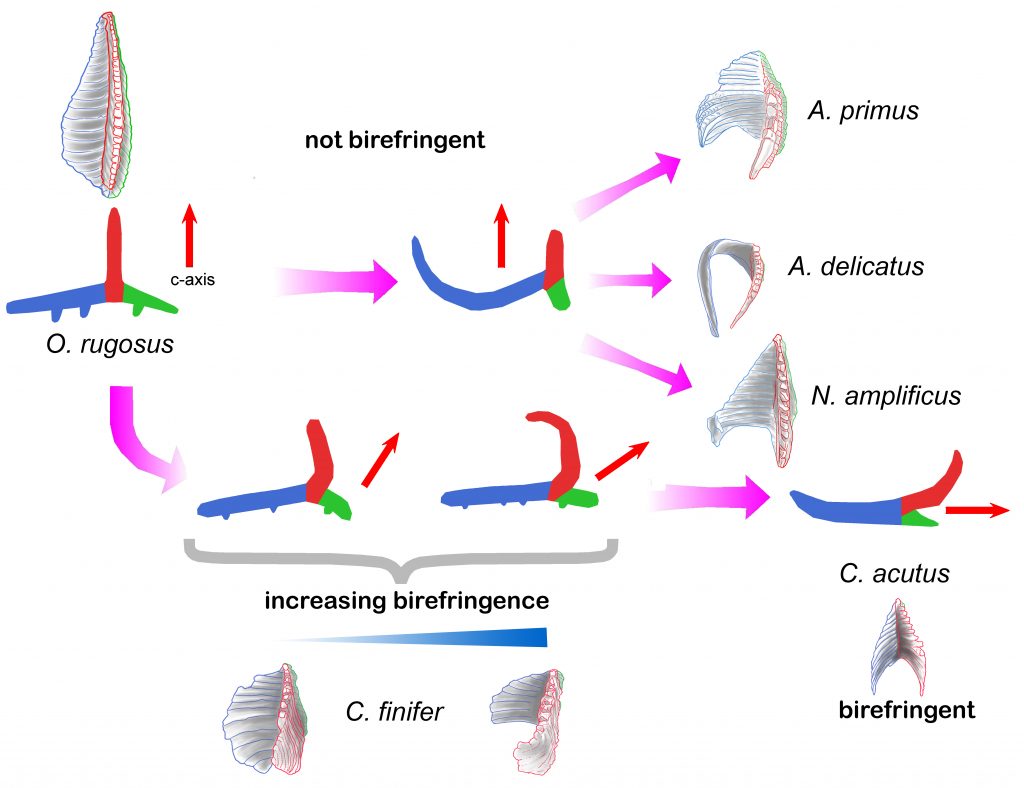Sediment samples of deep marine oceanic ODP boreholes from sites 999 in the Caribbean Sea and 1237 in the Eastern Pacific Ocean covering the period between 6 and 4.5 Ma have been studied with a focus on ceratolith evolution. Orthorhabdus rugosus is a nannolith with three blades (sinistral, median, and dextral) that first appeared during the Serravallian, it is not-birefringent in its stable orientation. It shows a high morphological variability time-interval at the end of the Messinian to the basal Pliocene (5.5 to 5 Ma) during which Ceratolithus (5.484 Ma) evolved. Changes occurred in the sinistral and median blades, whilst the dextral blade was reduced. Ceratolithus finifer n. comb is the first species of the evolutionary line. The nannolith stable position changed during its evolution, resulting in the older forms showing low birefringence and the younger ones moderate to high birefringence in the most stable orientation. Ceratolithus acutus, with an arrowhead shape, Ceratolithus armatus, and the morphologically distinct C. larrymayeri evolved from C. finifer with all three species showing high birefringence. The previous O. rugosus and C. finifer continued. Finally, C. armatus gives rise to C. cristatus. Ceratolithus atlanticus and C. tricorniculatus also evolved from C. finifer. All the species mentioned become extinct during the Pliocene except Ceratolithus cristatus that lives today. Detailed observations permit the analysis of the evolutionary trends of the group, possible mechanisms, patterns, and processes of speciation, and establish new criteria to define the species that, by their relative abundance and short geologic range, have permitted adjustment of biostratigraphic markers for this period.

Cite as: Lancis, C., Tent-Manclús, J.-E., Flores, J.-A., 2024. Origin and evolution of the Neogene calcareous nannofossil Ceratolithus. Mar. Micropaleontol. 186, 102310. https://doi.org/https://doi.org/10.1016/j.marmicro.2023.102310

Recent Comments